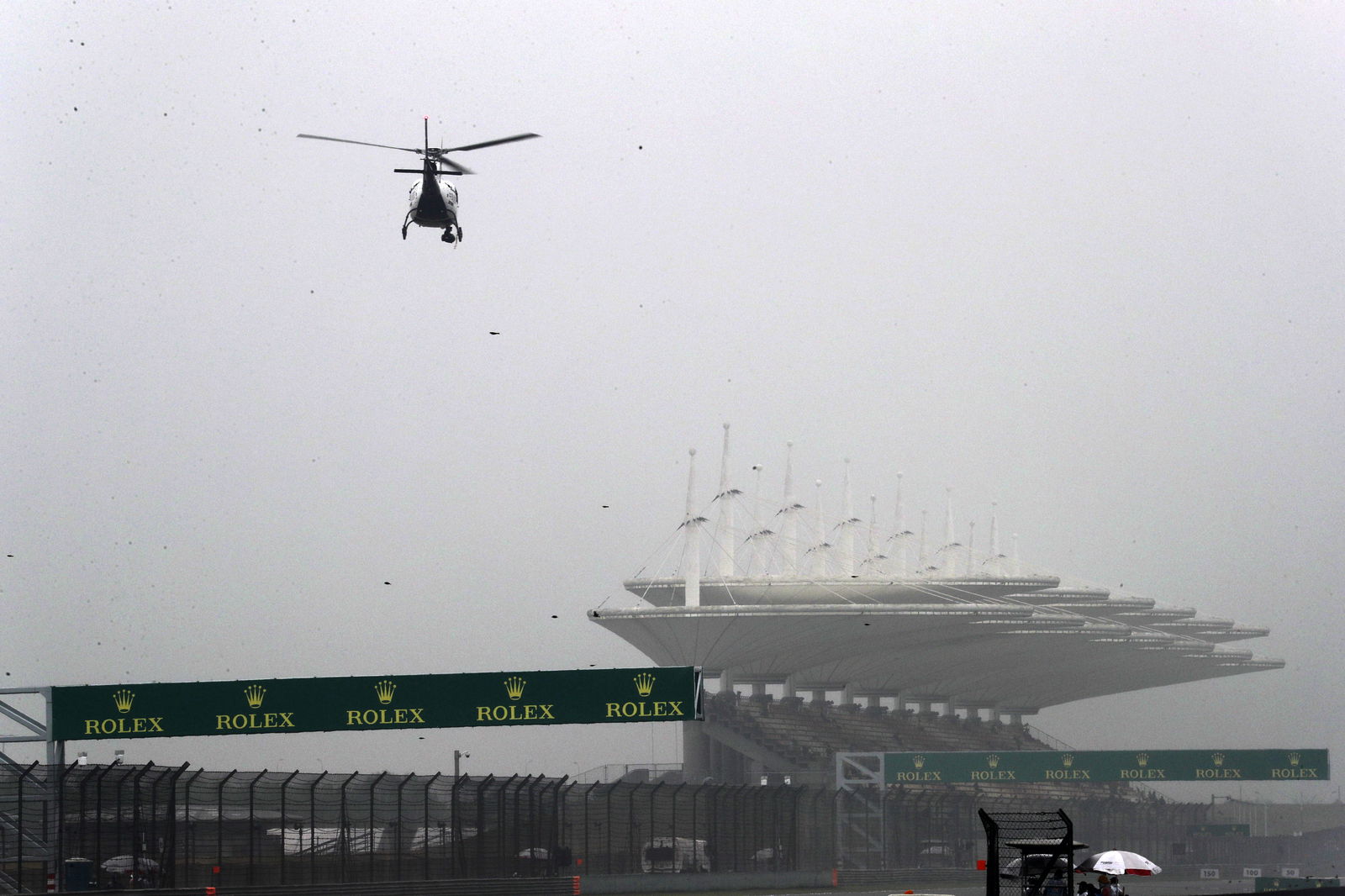Chinese GP: The tragic death that haunts F1 30 years on

By Ollie BarstowFollow @OllieBarstowF1 on Twitter
You can certainly understand the frustration for the fans that made it out to the Shanghai International Circuit today, only to go home having watched a paltry 20mins of track action... in the rain.
The SIC, located well out on the fringes of the bewilderingly vast Shanghai in Jiading, certainly isn't the easiest venue to get to but judging by the kaleidoscope of banners, flags and merchandise, a sizeable crowd (though still dwarfed by an immense grandstand) was ready to cheer on their heroes had they been given the chance to.
I have little doubt many will return tomorrow with their enthusiasm intact, but F1's disrupted build up to the Chinese Grand Prix has left many in the paddock asking questions... as is so often the case in weather-related decisions.
Strictly speaking, the conditions at the SIC were generally fine... misty, damp and generally grim, but the cars could go on track at least, and while there was some irony to see images of said helicopter being beamed from a camera stationed on another helicopter hovering overhead, it is understood the weather at the altitude to fly outside the circuit's limits was very poor.
In a sport where Mother Nature's wrath has often led to headaches and debates over what is safe and what is sport, the move to halt any track action whilst the medical helicopter could not operate may seem overtly cautious but it is one where the price - however unlikely - is potentially (and literally) critical.
Unfortunately, as with many strict rulings in this sport, it took tragedy for this ruling to be introduced.
In 1986, Elio de Angelis died after crashing his Brabham during testing at Paul Ricard in France. Despite the severity of the accident itself, the Italian survived the impact, though he was trapped for 10mins as his car slowly caught alight.
While the relatively secluded nature of the French venue made a road transfer difficult and there was no helicopter immediately nearby. It took 30mins for the helicopter to arrive, but de Angelis - who only suffered a broken collarbone - died due to complications from smoke inhilation 29 hours after the incident in Marseille hospital.
De Angelis would be the last driver to die as a result of a crash in an F1 car until the ill-fated 1994 San Marino Grand Prix and the deaths of Roland Ratzenberger and Ayrton Senna.
As Williams' Paddy Lowe explains, there is a 'suspicion' that had there been a helicopter available at the venue when he crashed, he'd have survived.
"Obviously it does give cause for discussion," the former Mercedes technical director told Sky. "It's a great shame for the fans here today, we've got some fantastic fans in China, who are so enthusiastic for the sport and its personalities and they were denied some excitement on the track. I think we definitely have to look at it.
"There is an important history behind this, going back to the 1980s, I think it was the accident with [Elio] de Angelis in testing, where there was a suspicion that if there had been a helicopter he would have been in better shape.
"Since then they've put this rule in place and of course it's become a lot more sophisticated as well. I think we should understand the importance behind it and respect that first and foremost."
Naturally, there was little suggestion the helicopter should have been able to fly in fog thick enough to close an international airport much less reach a helipad on top of a hospital, but should there have been a contingency?
Usually there is. Low cloud and terrible weather caused similar disruptions to the 2008 Japanese Grand Prix in Fuji, but the nearest hospital was accessible by ambulance if necessary, allowing the race to go ahead.
This is not the case in Shanghai, with the 40km journey to the nearest hospital proving too much of a risk if it came to it. Reportedly, the FIA even tested this out between practice sessions but it did not meet requirements.
It has been less than three years since F1 was rocked to its core by the accident and subsequent death of Jules Bianchi. On that occasion the race began in the wake of a typhoon that had made conditions treacherous on race day and whilst a series of unfortunate circumstances have been identified for fault in the tragedy, the FIA will be absolved by the decision to not compromise on safety when it is in its control.
Whether it should be more pro-active in shaking up the race format to avoid similar problems come Sunday is another matter, but when it comes to safety, the FIA shouldn't be questioned for putting it first today.

